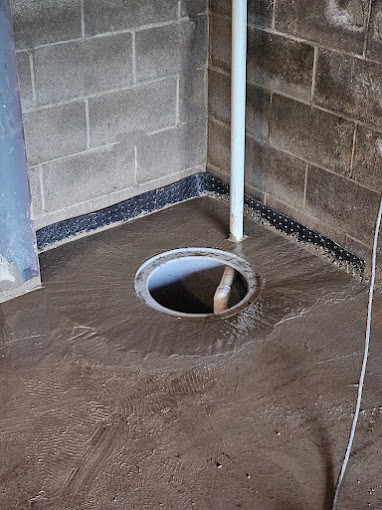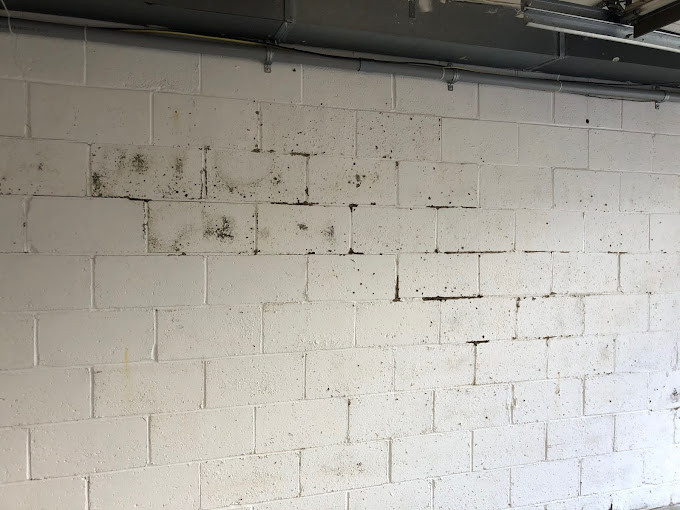When you’re tackling moisture problems in your home, you might be torn between installing a sump pump or opting for foundation repair. A sump pump can prevent flooding and groundwater seepage, protecting your basement from water damage. Yet foundation repairs address the structural integrity of your home, fixing cracks and soil erosion. It’s a complex issue and the best solution might not be an “either-or” choice. Perhaps it’s worth considering a combination of both? Let’s explore this further, shall we?
Key Takeaways
- Sump pumps prevent basement flooding and groundwater seepage, potentially avoiding the need for foundation repair.
- Foundation repair addresses structural issues such as cracks and uneven ground, which could be caused by water damage or soil conditions.
- The choice between sump pump installation and foundation repair depends on the specific home conditions, including moisture levels and soil stability.
- A combination of both sump pump and foundation repair often provides the most comprehensive solution for water intrusion and structural issues.
- Cost considerations should factor in initial expenses, potential long-term savings, and maintenance costs for both sump pumps and foundation repairs.
Understanding Foundation Issues
One often overlooks the importance of a building’s foundation until issues start to appear. Foundation cracks might seem minor at first, but they can signal deeper settlement problems.
As you walk around your property, you might notice uneven ground, a sign of soil erosion, which can undermine the structural integrity of your building.
Drainage issues are another common foundation problem you’ll encounter. If water pools near your home, it can lead to moisture intrusion, which can weaken the foundation and cause mold growth.
This is where waterproofing solutions come into play. They not only protect your foundation from water damage but also help maintain its structural integrity.
Foundation heaving is another issue you should be aware of. This happens when the soil underneath your foundation expands and contracts due to moisture fluctuations, causing your foundation to move upward.
It’s a serious issue that can cause significant damage to your home.
In all these cases, it’s imperative to address the problem promptly to prevent further damage.
What Is a Sump Pump?
You might be wondering, what exactly is a sump pump?
It’s a device that plays a crucial role in keeping your home safe from water damage.
We’ll cover everything from how it works, how it’s installed, and how to maintain and repair it.
Sump Pump Functionality
In the heart of your home’s basement or crawlspace, a sump pump works tirelessly, protecting your property from potential water damage. This device is your first line of defense against basement flooding, groundwater seepage, and even condensation buildup.
But how does it function? And what’re the different sump pump types?
- Primary Sump Pumps: These are the most common type, designed to pump seepage water out of your basement. They’re powerful and can handle high volumes of water.
- Battery Backup Sump Pumps: These kick in when the power goes out, ensuring your basement stays dry even during a power outage.
- Combination Sump Pumps: This type combines the primary and battery backup pumps into a single unit. It’s the best of both worlds, ensuring optimal sump pump efficiency.
- Sewage Sump Pumps: Not to be confused with sewage ejector pumps, these pumps allow water to drain into your septic system or sewer line.
Understanding these sump pump types and their functionality is crucial to protecting your home from water damage.
Sump Pump Installation
Having a clear grasp of the different types of sump pumps and their roles is half the battle. There are two main sump pump types: pedestal and submersible. A pedestal pump has a motor mounted on a shaft that’s placed above the pit, while a submersible pump is fully immersed in the water. Your choice depends on your needs and budget.
Next, consider the sump pump sizing. This involves the capacity and the horsepower of the pump. The capacity, measured in gallons per minute, tells you how much water the pump can handle.
The horsepower, on the other hand, determines the power of the pump. If you’re dealing with a high water table or frequent heavy rains, you’ll need a pump with a larger capacity and higher horsepower.
Maintenance and Repair
Regularly checking your sump pump for any signs of damage or malfunction is crucial to ensure that it’s always ready to protect your basement from flooding.
Preventive maintenance helps avoid costly repairs and keep your sump pump in good working order.
Let’s delve into four key maintenance and repair techniques that you should know:
- Inspect regularly: Check your sump pump for any visible signs of wear and tear, blockage, or rust. This simple step can prevent bigger issues down the line.
- Clean the pump: Dirt and debris can accumulate in your sump pump and affect its effectiveness. Regular cleaning helps maintain the pump’s efficiency.
- Test the pump: Run water through the sump pump occasionally to ensure it’s working properly. Any irregular operation could indicate a need for repairs.
- Professional check-up: Even if you’re diligent with maintenance, it’s beneficial to have a professional inspect the pump annually. They can detect subtle issues and offer expert repair solutions.
The Process of Foundation Repair
Without proper attention, your home’s foundation can deteriorate over time, leading to serious structural issues.
Foundation settling is a common problem that’s often the result of soil expansion and contraction beneath your home. When the soil expands, it can push against your foundation, causing it to crack or shift. Conversely, when the soil contracts, it can create gaps leading to foundation settling.
To rectify these problems, the process of foundation repair involves several steps. First, an inspection is done to identify the extent of the damage and the underlying causes. This could include identifying drainage issues that might be contributing to soil expansion and contraction.
Then, various waterproofing methods may be used to prevent future water damage. This could involve installing a French drain or waterproofing the exterior of the foundation.
Finally, the actual repair is done. This could involve underpinning to strengthen the foundation, or using piers or pilings to lift and stabilize the foundation.
Foundation repair is a complex process that requires professional expertise. It’s not a DIY job, so don’t hesitate to call in the pros when you notice signs of foundation problems.
It’s better to deal with it now than face more serious issues down the line.
Cost Comparison: Sump Pump vs. Foundation Repair
When it comes to protecting your home, considering the cost of a sump pump versus foundation repair is crucial.
It’s not just about the initial installation costs, but also long term savings, moisture management and the frequency of repairs.
The cost of a sump pump, a popular drainage solution, can vary widely depending on its complexity and the severity of your moisture issues.
The upfront cost may seem high, but the long-term savings in terms of reducing the repair frequency can make it a worthwhile investment.
Plus, it’s a crucial system for moisture management which can extend its longevity.
Foundation repair, on the other hand, can be more or less expensive depending on the extent of the damage.
Here are four factors to consider:
- Installation costs: Foundation repair can be pricier but it’s a one-time investment.
- Long term savings: Sump pumps can save you money in the long run by preventing future damage.
- Property value: Both solutions can boost your property value by ensuring the structural integrity of your home.
- Environmental impact: Sump pumps use electricity, but modern models are designed to be energy efficient.
Effectiveness of Sump Pumps
You might be wondering how effective sump pumps really are.
Let’s start by understanding the basic functionality of sump pumps and their role in keeping your basement dry.
Then, we’ll compare sump pumps’ effectiveness against moisture, a common enemy of your home’s foundation.
Sump Pumps: Functionality Overview
Consider this: a sump pump, your home’s silent guardian, tirelessly working to protect your property from water damage.
But what exactly is a sump pump, and how does it function? More importantly, what’re the sump pump benefits for you?
- Sump Pump Types: There are two main types of sump pumps – pedestal and submersible. The pedestal pump’s motor is mounted above the sump, where it’s more accessible but also more noisy. On the other hand, the submersible pump is entirely enclosed in the sump, making it quieter but harder to access for maintenance.
- Water Collection: Sump pumps collect excess water from your home’s foundation and distribute it away from your property, preventing water damage and flooding.
- Automatic Function: Most sump pumps are equipped with a pressure sensor or a float activator, which automatically triggers the pump when water reaches a certain level.
- Backup Systems: Many sump pumps come with a battery backup system, ensuring the pump keeps running even during power outages, a common occurrence during severe storms.
Above all, the peace of mind knowing that your home is safe from water damage is one of the greatest sump pump benefits.
Sump Pumps vs. Moisture
As we’ve explored the functionality and benefits of sump pumps, it’s clear they play a key role in safeguarding your home against water damage. They aren’t only efficient tools for controlling water accumulation, but they also provide an effective solution for moisture control.
The sump pump efficiency lies in its ability to swiftly remove water from your home. When it rains heavily, or the snow melts rapidly, your basement can easily become a pool of water. This is where a sump pump comes into action. It pumps the water out before it can cause any significant damage.
But that’s not all; it also maintains a drier environment in your home by controlling the moisture levels.
Moisture control is a crucial aspect of maintaining the integrity of your home. Excess moisture can lead to mold growth, unpleasant odors, and even structural damage. With a sump pump, you can keep moisture at bay, thus preventing these issues from arising.
Longevity of Foundation Repairs
Foundation repairs, once completed, can stand the test of time if done correctly. When considering repair durability, it’s vital to remember that the longevity of these repairs can be significantly influenced by several factors.
- Quality of Materials: High-quality materials tend to have greater long-term effectiveness. They’re more resistant to wear, tear, and environmental elements, extending the lifespan of the repair.
- Expertise of Professionals: Experienced professionals are well-versed in foundation repair techniques. Their expertise ensures that the repair is done correctly and lasts longer.
- Regular Maintenance: Regularly inspecting and maintaining your foundation can prolong the lifespan of the repair. It helps in early detection of any issues that may affect the repair durability.
- Environmental Conditions: Certain environmental conditions like soil type and moisture levels can impact the long-term effectiveness of the repair.
In short, the longevity of foundation repairs isn’t just about the initial repair process, but also about consistent maintenance and the surrounding environment.
Not to undermine the role of a sump pump, but it’s evident that well-executed foundation repairs can provide a long-lasting solution to your foundation problems.
You might find that foundation repair is the more sustainable choice for your home.
Checklist for Choosing a Solution
Before you make a decision between sump pump installation and foundation repair, it’s crucial to have a solid checklist to guide you. This checklist should focus on sump pump types, foundation repair methods, installation considerations, maintenance tips, cost factors, effectiveness metrics, expert recommendations, common issues, homeowner experiences, and long-term solutions.
Investigate different sump pump types and understand their installation considerations. Consider the common issues you might face and the effectiveness metrics of each. This includes looking into homeowner experiences and expert recommendations.
Review foundation repair methods and their long-term solutions. What maintenance is involved? What do homeowner experiences and expert recommendations say?
Your checklist should also include cost factors. Are you prepared for the potential costs of a sump pump or foundation repair?
Here’s a quick table to help you evaluate your options:
| Consideration | Sump Pump | Foundation Repair |
|---|---|---|
| Installation & Maintenance | Different sump pump types require specific installation considerations and maintenance tips. | Foundation repair methods vary greatly, so it’s essential to understand the procedure and the long-term maintenance involved. |
| Cost Factors | Consider the initial installation cost and ongoing maintenance expenses. | Initial repair costs can be high, but consider if this provides a more comprehensive long-term solution. |
| Effectiveness & Issues | Evaluate the effectiveness metrics and common issues of sump pumps. | Review the effectiveness of foundation repair and any potential issues that can arise. |
Choose wisely. Your home depends on it.
Understanding Sump Pump Benefits
 Three primary benefits make sump pumps a compelling choice over foundation repairs. They’re efficient, cost-effective, and proactive solutions for those battling water issues. Unlike foundation repairs, which often involve extensive and intrusive work, sump pumps offer targeted, precise interventions.
Three primary benefits make sump pumps a compelling choice over foundation repairs. They’re efficient, cost-effective, and proactive solutions for those battling water issues. Unlike foundation repairs, which often involve extensive and intrusive work, sump pumps offer targeted, precise interventions.
Here are the sump pump advantages you ought to consider:
- Efficiency: Sump pumps excel in swiftly removing water from your home. They’re designed to kick into action the moment they detect excess water, making them an efficient solution for water problems.
- Cost-effectiveness: Compared to the potentially hefty costs of foundation repair, a sump pump is a relatively affordable investment. It offers a long-term solution to water damage, potentially saving you money in the long run.
- Proactive: Installing a sump pump is a proactive move. It doesn’t wait for water damage to occur; it prevents it from happening in the first place.
- Safety: Sump pumps can help prevent harmful mold and mildew caused by water damage. This is a significant health benefit that shouldn’t be overlooked.
Foundation Repair: A Deep-Dive
While sump pumps offer compelling benefits, it’s also important to understand the implications of foundation repair. Foundation types vary, and soil conditions significantly impact the structural integrity of your home. Settlement signs often indicate a need for repair techniques involving drainage solutions and waterproofing options.
Engineering assessments are crucial to identify the best approach. The right solution could range from installing moisture barriers to more extensive landscaping effects.
Consider the following table to better understand foundation repair:
| Foundation Types | Implication | Solution |
|---|---|---|
| Concrete | Settlement signs due to soil conditions | Engineering assessment for repair technique |
| Stone | Lack of structural integrity | Installation of moisture barriers |
| Wood | Moisture damage | Drainage solutions |
| Brick | Cracks due to settlement | Waterproofing options |
In the end, the choice between a sump pump and foundation repair depends on your specific needs. If you’re dealing with persistent flooding, a sump pump might be your best bet. However, if structural issues are your primary concern, foundation repairs could be what your home needs. Remember, it’s not an either-or situation; often, a combination of both provides the best protection for your home. Always consult a professional for expert advice.





